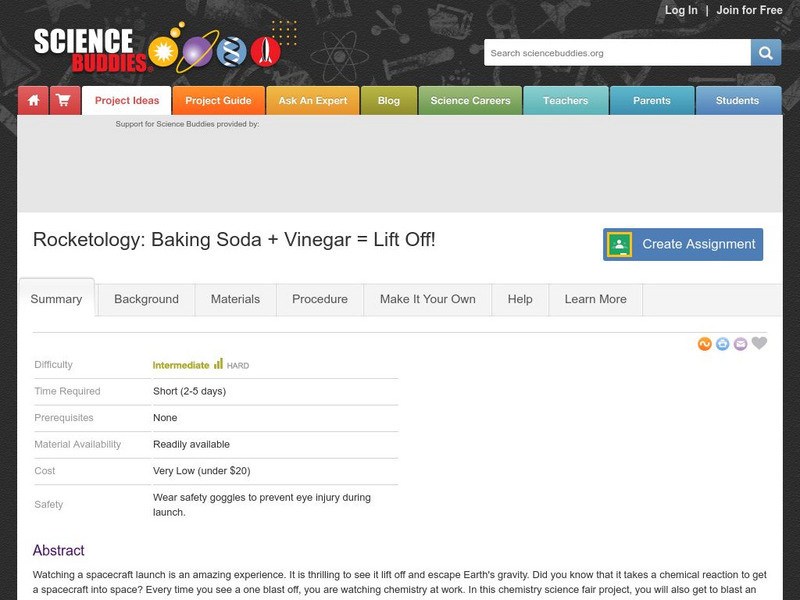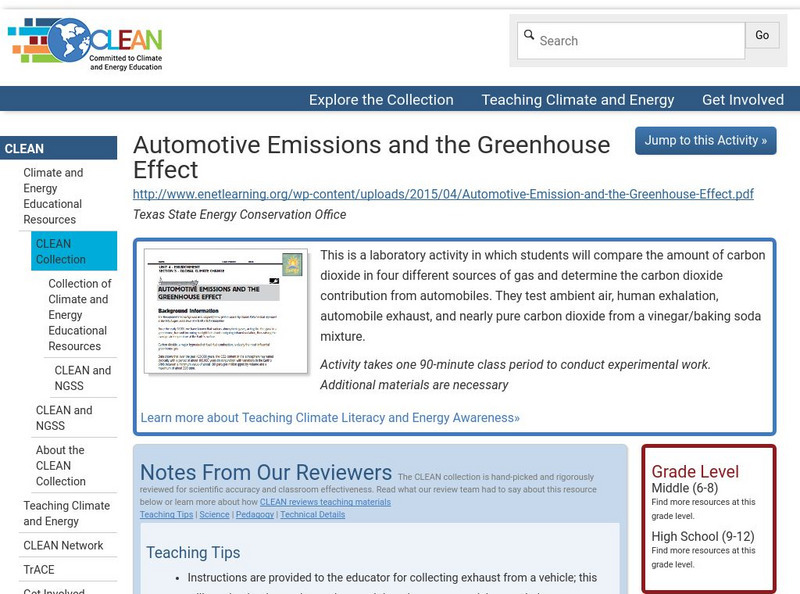Hi, what do you want to do?
Curated OER
Mystery Powders
Fifth graders evaluate the physical properties of 5 powders. Each powder is subject to different conditions. They describe each observation as with a chemical change or a physical change.
Curated OER
Oceanic Absorption- Oceanic Sequestration
Students examine the techniques that may be used to reduce carbon dioxide in the atmosphere. In this pollution lesson students simulate oceanic sequestration using chemistry.
Curated OER
A Very Simple Conductivity Meter
Students investigate the hardness of different water samples using the conductivity meter. In this chemistry lesson, students build their own meter following specific procedures. They identify an unknown sample of water.
Curated OER
Science Lessons that Create the Right Chemistry!
Mix it up in your classroom with some chemistry investigations!
Curated OER
pH Basics
At some point, all science learners experiment with pH. In this brief lesson, they simply use pH strips or a meter to find the pH of six different solutions. A useful worksheet that displays a data chart is included for your students.
Curated OER
Chemistry: Mini-Volcanoes
Young scholars observe an experiment using common household chemicals to simulate a volcanic eruption. In small cups, they follow the teacher's instructions to make their own volcanoes. After watching a Brain-pop video, students complete...
Curated OER
Observing The Influence Of Acid Rain On Plant Growth
Students observe one of the direct effects of acid water on plant growth. Students engage in an experiment which will take about 2 weeks. Students will understand the effect that acid rain has on plant growth.
Curated OER
Volcanoes
Students explore the formation of volcanoes. In this earth science lesson, students build their own volcanoes in the lab using different materials. They identify the different types of volcanoes.
Curated OER
Soil Buffering
Students observe the pH change of an acid mixture poured over soil in a filter. Since the buffering capability of soils differs, you may want to do this experiment with several different soil types.
Curated OER
Looking At Acid's Effects On Metals
Students perform an experiment that demonstrates acid rain. The chemical effect of acids on metals may take at least five days for the human eye to see, even though the reaction starts as soon as the acid contacts the metal.
Curated OER
Investigating Acidity
Students classify liquids as an acid, base or neutral. They use purple cabbage juice as an indicator to test several liquids in order to group them as acids, bases or neutrals.
Curated OER
Acids & Bases: What's the Solution?
Students conduct an experiment called "What's the Solution? Acid, Base or Neutral." to determine the differences between these types of substance.
Curated OER
Activity #16 Dancing Spagehetti
Students experiment with floating the spaghetti, the gas functions like a life preserver. Pupils comprehend that a person is slightly more dense than water. They comprehend that a life preservers are made of low-density materials. The...
Curated OER
Lava Layering
Students observe the layering process of lava flow with hands-on activities.
Curated OER
Kitchen Cleaners
Students, in groups, select two cleaning agents that they feel solves their cleaning problem.
Curated OER
Pollen Tracks
Students participate in an artificial dig investigating imitiation rock samples that contain "pollen" from ancient plants. Students determine which plants the pollen samples came from.
Curated OER
A Very Simple Conductivity Meter
Middle schoolers conduct a simple conductivity meter to test the ionic or non-ionic nature of water samples including one from their home.
Curated OER
Geo Sequestration Lab
Students explore geologic sequestration as a technique used to reduce carbon dioxide in the atmosphere. They use chemistry to stimulate oil mining. Students conduct an experiment to learn about geo carbon sequestration.
American Chemical Society
Middle School Chemistry: Controlling Amount of Products in a Chemical Reaction
Students analyze the chemical equation for the reaction between vinegar and baking soda. They observe that the gas produced in the reaction is also part of the products of the written chemical equation.
Science Buddies
Science Buddies: Project Ideas: Rocketology: Baking Soda and Vinegar
The objective of this science fair project is to determine the correct ratio of baking soda to vinegar that will result in the highest launch of a plastic film canister. The Science Buddies project ideas are set up consistently beginning...
Museum of Science
Museum of Science and Industry: Online Science: Create Gas
Follow these simple, step-by-step instructions to create and observe the results of the chemical reaction between vinegar and baking soda.
PBS
Pbs Learning Media: Acids and Bases: Making a Film Canister Rocket
ZOOM cast members mix different amounts of baking soda and vinegar to see which combination produces the most carbon dioxide for launching a film-canister rocket. [3:23]
Climate Literacy
Clean: Automotive Emissions and the Greenhouse Effect
This is a laboratory activity in which students will compare the amount of carbon dioxide in four different sources of gas and determine the carbon dioxide contribution from automobiles. They test ambient air, human exhalation,...



























